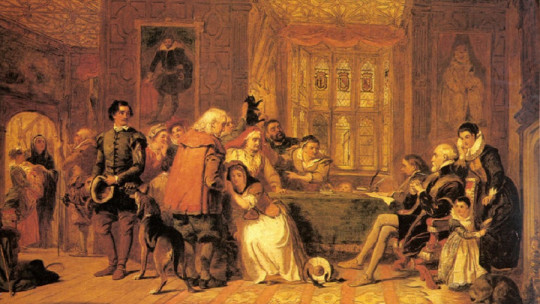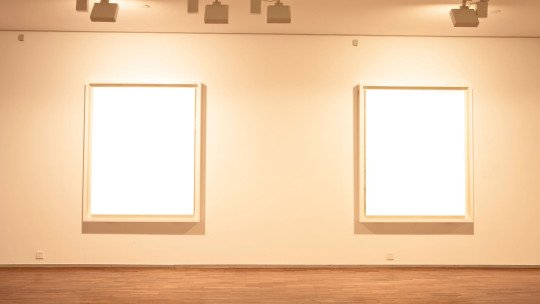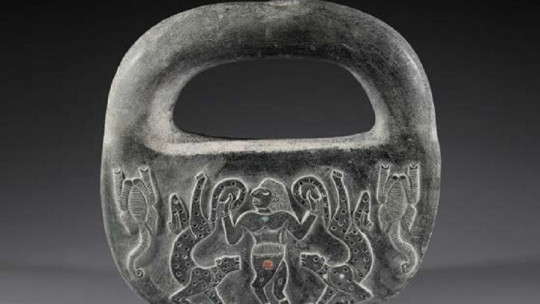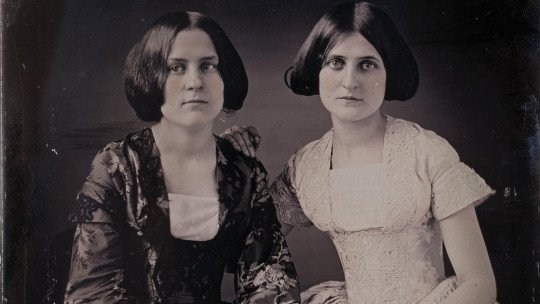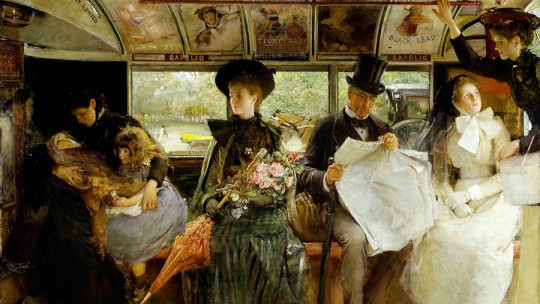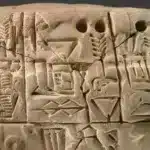We are in Salem, in Massachusetts County, in the colonies of what would later become the United States. For more than fifty years, the English Puritans have settled in Massachusetts Bay, in modest towns, dedicated to small commerce, livestock and crafts. It is the month of January 1695; In Salem, strange cases begin to occur among some young teenagers. Seizures, nonsense words, sudden crying and unseemly behavior. Immediately witchcraft was thought of, and fingers pointed as the culprit, among others, to the black slave of the girls’ family.
That year in Salem there was a notorious trial and many women were convicted of witchcraft. It was truly a chilling case, but was it the only one? The answer, unfortunately, is “no”. Because the Salem trials are simply one more piece of the phenomenon that spread throughout Europe and America in modern times, and that historiography has called “witch hunts.”
What is witch hunt?
It is known as “witch hunt” (a name imposed much later, by the way) to the psychosis that was unleashed in Europe and part of America between the 15th and 18th centuries and that led to the death of a large number of people accused of witchcraft The records we have attest that either sex was susceptible to being accused of witchcraft, although it is true that women were murdered in much higher numbers. According to the study by Michel Porret, from the University of Geneva, between 1580 and 1640, 110,000 trials took place in Europe, in which between 60,000 and 70,000 people were sentenced to death, of which 75% were women.
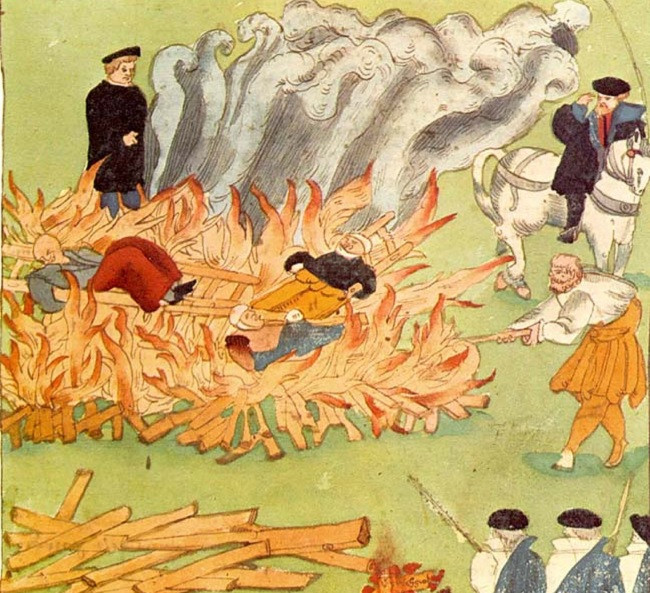
The areas where this phenomenon occurred most coincide with Protestant Europe; especially, the regions of the Holy Roman Empire (present-day Germany and neighboring countries). About 30,000 people were executed in this area alone, which would be almost half of the total number of people murdered for witchcraft. After the Holy Empire we would have the Helvetic Confederation (current Switzerland), which led to the death of more than 10,000 people.
The area where the witch hunt phenomenon caused the least impact was the Mediterranean area Spain, Italy and Portugal give a combined figure of about 500 deaths, a very low number if we compare it with northern Europe. We have, therefore, that in Catholic countries there were many witchcraft trials, but very few executions. The temperance with which the Inquisition treated the issue is therefore striking. We only have one clear exception: the Zugarramurdi trials of 1610, a small village in Navarra where 11 people were condemned to the stake (5 of them were burned “in effigy”, since they had already died).
What was the reason for this temperance of Catholic countries when judging? It’s not that the Catholic Church didn’t believe in witchcraft. In fact, in 1484, Pope Innocent VIII recorded his “real existence” in the bull Summis desiderantes affectibus. However, and as we have already commented, in the Catholic area witchcraft was not persecuted with the same viciousness as in Protestant countries. Historians have tried to clarify what motivated the spectacular “witch hunt” of modern times and why it was limited almost exclusively to the Protestant area of Europe.
Possible causes of the witch hunt
It is difficult to find a reason for such persecution. One thing is certain: only in difficult periods do phenomena of this caliber occur. It is as if they were the expression of a tired, discouraged and, above all, scared population. Because the European witch hunt was, mainly, fruit of a collective hysteria that has its roots in poor harvests, political conflicts, hunger, disease and war
In his magnificent essay The witchframed in volume 3 of the no less magnificent collection women’s history, Jean-Michel Sallman proposes some theories about what motivated the grisly persecution and death of so many people. To begin with, Sallman states that if you were a woman, your chances of being accused of witchcraft were 4 times greater than if you were a man. There is no doubt about that; Just look at the figures that we have already given previously. Above all, the women who were most susceptible to being accused of witchcraft were widows (who had no financial resources and were often alone and unprotected). For the mentality of the time, women were weak beings and, therefore, more likely to be tempted by the devil, which made them “natural” victims of demonic possession and witchcraft.
Sallman points out three causes for this anti-female violence : first, the misery of the time; second, the sexual rigidity of the Reformation; and third, the fact that women were, in general, the repository of traditional medical knowledge. Let us examine each of these causes below, to better understand the phenomenon.
First, we have the misery that swept through Europe in the 15th century. Let us remember that, just a century before, the Black Death had wreaked havoc on the European population. A period of economic and social crisis ensued which, of course, exasperated the population and led to an attempt to find, as always happens in these cases, a “scapegoat.”
In second place, we have to frame the witch hunt in the Protestant Reformation , whose sexual morality, in reaction to the excessive permissiveness of the Catholic Church, had become radicalized over time. This rigid sexual morality meant that any woman who strayed from the established path (that is, marriage and reproduction) was branded a witch. Sexual deviations were also considered demonic; Let us remember that witches were accused, among other “crimes”, of practicing sexual orgies with the devil.
Finally, we have that women were, mainly, the repository of all popular tradition, which turned them into midwives and healers. Then, people began to say to themselves: if a woman can heal, she can also harm. From there to accusing them of the practice of black magic was only one step.
There are, however, many other reasons. A phenomenon of such magnitude as the witch hunt must necessarily have a complex origin. We have already commented that the highest number of executions took place in the Holy Empire. And this is because the empire was experiencing significant political fragmentation (due, in part, to the breakdown of the Protestant Reformation) that meant that a strong central power did not exist. In the same way, it has been observed that the regions of France where there was a greater number of trials and executions for witchcraft were the peripheral regions, less cohesive with the central royal power and, furthermore, with greater contact with Protestant Europe.
Finally, we have a cause that cannot be ignored: panic. The European population entered a spiral of hysteria that made them see witches everywhere Any phenomenon that apparently had no explanation (the sudden death of a child, a pandemic that hit the town, climate catastrophes) was argued based on the existence of one or more people who, through black magic, dedicated themselves to doing suffer the population. Of course, this led to the appearance of the tips; If you didn’t feel sympathy for your neighbor, you just had to report him to court. Just saying that you had seen him at night in the forest with candles and in a strange attitude was enough for him to be prosecuted for witchcraft. Thus, the accusation of witchcraft became a very convenient way to get rid of undesirable people.
But what, exactly, was a witch?
Accusing a person of witchcraft carried, among other things, the accusation of sexually surrendering to the devil. Through this sexual pact, the witch or warlock allied with Satan to destroy Christianity and create a new world based on the cult of the devil. So, It was believed that witches and warlocks practiced black magic to harm people and cause calamities that affected the population : from climate changes to ruin crops to causing sterility and impotence in their wives and husbands. Furthermore, it was a widespread belief that these witches met in nighttime ceremonies, called sabbats, where they devoured children and had a huge orgy, among themselves and with demonic beings.
Throughout the Modern Age, writings proliferated describing what witches were and how to identify them. An example of this is the famous Malleus maleficarum either The witches hammer, written at the end of the 15th century by the inquisitors Jacob Sprenger and Heinrich Kramer. This witchcraft “manual” had a great impact on modern society, to the point that many of the demonologists of the time refer to it. In fact, in the 16th century the figure of the witch hunter appeared (the witch hunter of the Anglo-Saxon chronicles), an individual who was versed in manuals such as the Malleus and knew how to “distinguish” people who practiced witchcraft. This sinister character (curiously, always male) tracked any significant footprint like a hunting dog and interrogated suspects to discover if they were lying.
In it Malleus, Sprenger and Kramer definitively lay the misogynistic foundations of witchcraft. Because, although it is true (as we have already mentioned) that men were also prosecuted, we have already seen how the vast majority of those executed were women. In the Malleus they are reflected the beliefs, carried over from Antiquity, that women are much weaker than men and, therefore, more susceptible to being deceived by the devil Apart from this, there was an undeniable fear of female sexuality, which was linked to the devil, precisely, because of the fear caused by a “non-virtuous” and sexually active woman.
The witch is, therefore, lascivious and malevolent, and uses her tricks to turn the world upside down and give power to the devil. This message became a real fear, which penetrated the society of the time and caused an unprecedented psychosis that dragged many people to death.
The last witches
There is a prejudice that links the witch hunt exclusively to the medieval period, but we have already seen how this is not true. Because although it is true that belief in witchcraft already existed in the Middle Ages, it is no less true that the great psychosis that caused the witch hunt occurred in modern times. In fact, the last executions took place in no less than the 18th century, the famous “age of enlightenment.”
However, it is obligatory to say that, even in the darkest era of persecution (that is, the 16th and 17th centuries), many voices were raised against this practice, who considered witchcraft as a popular trick. This is the case of the Protestant pastors Anton Praetorius (1560-1613) and Johann Matthäus Meyfart (1590-1642), who strongly opposed the persecution and torture of the victims.
During the 18th century the processes decreased considerably, but they did not disappear The aforementioned Michel Porret states that the last person executed for witchcraft died in 1793 in the Grand Duchy of Posen (the day before yesterday, as they say). At the beginning of the 19th century, belief in the supernatural powers of wizards and witches began to subside.

